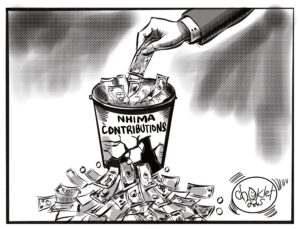ECONOMIST Chibamba Kanyama has projected that the country’s inflation might drop to as low as 12 percent by August, following the expected stability of food prices as the produce of this year’s harvest hits the market.
And Kanyama has also projected that the kwacha is not likely to depreciate any further due to an expected reduced demand for dollars once the country puts in place a moratorium on debt service.
In an interview, Kanyama noted that since the country’s inflation is mainly food driven, the current harvest could ease inflationary pressure and possibly reduce the inflation rates as the year progresses.
“Remember that our inflation is driven largely by food. We are expecting stability in terms of prices due to the harvest that is starting to come into the market. This is what is giving us hope that although the inflation pressures will continue to be of worry, they will begin to stall and possibly fall to around 12 percent by August,” he said.
He added that the reduction of the policy rate by the Bank of Zambia is targeted at increasing production in the economy and not consumption, which could lead to the country experiencing hyper-inflation.
Kanyama also urged the manufacturing sector to take advantage of the import challenges brought about by the Covid-19 pandemic to produce and supply local products.
“Part of the reasons we have an increase in inflation is because of low output, particularly due to COVID impact. We are not getting as many imports as we should have expected due to the lockdown in source countries. Zambian industry has to respond to this opportunity, to this problem. We have to manufacture our own toothpicks, produce our own apples, potatoes, fruits and everything else that was originally imported. We can only do this if there is enough liquidity that comes about due to falling interest rates. But this depends on how this liquidity is spent. If this liquidity goes towards consumption, we may have hyperinflation, a situation that still remains likely if we mismanage the opportunity. It means this is the time the BoZ has to monitor the market responses such as real reduction in interest rates by commercial banks, how these funds are used in the case of the profile of creditors, whether consumer loans or funds advanced to the real economy. The expectation of the Bank is that much of the money will be diverted to production. Companies are realigning their businesses,” Kanyama said.
He further noted that the country was going through a “stagflation”
“The situation pertaining to Zambia is one we call stagflation. This is a case where you have rising inflation while undergoing a recession. The COVID situation has led to rapid deterioration of economic output by industry. Under these circumstances, the monetary authorities are faced with limited options but to go for a mix of economic modelling and street smarts. The Bank of Zambia has to treat two devils at the same time, inflation on one hand which requires tightening of liquidity through increases in the Policy rate and statutory reserves or easing liquidity by doing the reverse which is relaxing the policy rate. A lower policy rate induces liquidity and improves private sector responses towards increased output. This is the treatment to recession,” he said.
“The question is, given the circumstances, which is the better devil; allowing inflation to grow or allowing recession to deepen? It is a Catch 22 situation: It is like having a choice to serve two people who are drowning and you only have one to rescue: a two year old child or a 70 year old. The BoZ has chosen to increase output by reducing the policy rate because they believe whatever impact rising inflation will do will certainly be mitigated by increased output. The Bank has opted to inject liquidity in the system.”
And Kanyama noted the expected reduction in inflation can also be attributed to the expected stability in the local currency.
“The Kwacha has rapidly depreciated but we are not expecting any further depreciation. The exchange rate has been one other critical source of inflation and we see a situation where there will be some easing. What is causing the depreciation is demand for dollars mainly due to imports and debt service. Once we have a moratorium on debt, we will manage the imported inflation. We therefore expect some level of stability going forward. In any case, due to COVID, we are not expecting a lot of imports,” said Kanyama.
























